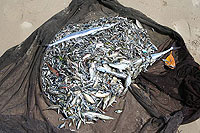
|
||||||||
|
The wide range of fishing methods and gear currently used in the Australian fishing industry reflects the characteristics of the species targeted by commercial fisheries. The following is a summary of the main commercial fishing methods used. Purse seine Purse seine nets are constructed with mesh of a size smaller than the fish being targeted. A skiff or buoy anchors one end of the net while it is set around a school of fish, after which a purse line is pulled to close the bottom of the net. Purse seine nets are used to target high-volume schooling species including tunas, in coastal and oceanic waters. |
 |
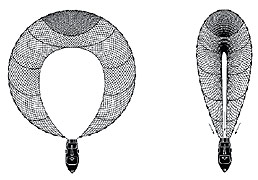 |
Lampara net The lampara net is similar to a purse seine, but it has tapered panels to give a characteristic scoop shape rather than being flat. The lampara net is set around a school of fish and when both ends are retrieved the vessel tows the net forward, closing the bottom and then top of the net. This type of net is used to catch pilchards and anchovy in inshore waters. |
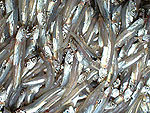 Anchovies - a type of small fish |
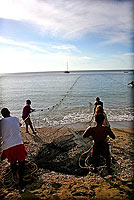 Beach seine (courtesy of Jouni Tyrisev via Flickr) |
Beach seine The beach seine net is set parallel to the shoreline, some distance off the beach, usually by a dinghy. One haul line is retained on the beach while the dinghy returns the other and both lines are hauled until the seine net and entrapped fish are dragged onto the shore. Beach seine nets are used to catch many species, including mullet, Australian salmon, whiting and tailor. |
|
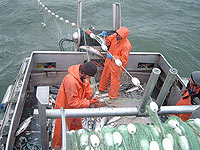 Gillnet fishing for salmon (courtesy of via Flickr) |
 |
Gillnet Panels of a gillnet net are set vertically in the water column to entangle fish. They can be set at the sea surface or in contact with the seabed. The size of the mesh in the net determines the size range of the species caught, as smaller fish can swim through the mesh and fish that are too large tend to bounce off. |
Pots and traps Traps are usually baited and set on the seabed with a line to a surface float. A wide range of trap designs is used to take crustaceans such as lobsters and crabs, and some species of fish. Pots and traps are set in a range of depths from a few metres to deeper than 200m. |
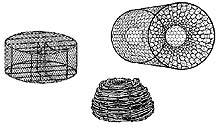 |
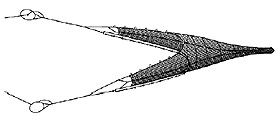 |
Bottom otter trawl The bottom otter trawl consists of a cone-shaped net, held open across the seabed by large hydrodynamic plates called ‘otter boards’. The otter boards are usually attached to the net by lines called sweeps, which are often quite long relative to the net width, and these sweeps aid in herding fish towards the net mouth. As the net is pulled along, fish accumulate in the rear section, or cod end, of the net. Depending on the vessel and gear, bottom otter trawling can occur to a depth in excess of 1500m, but generally in depths less than 1000m. |
| There are more fishing methods from prawn trawling to squid jigs on the next page. | |
|


